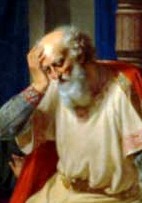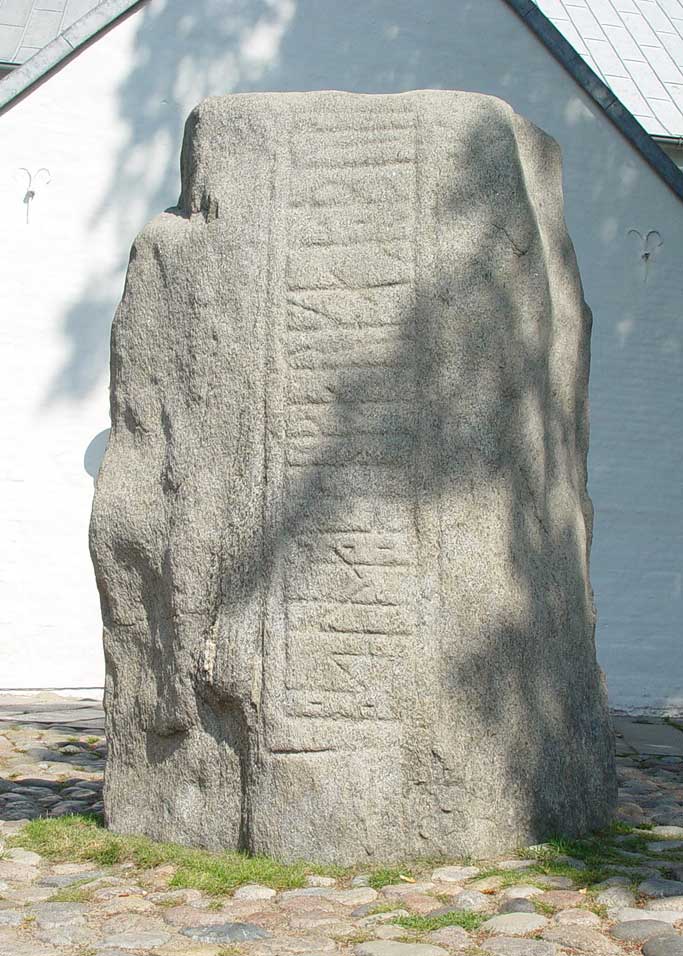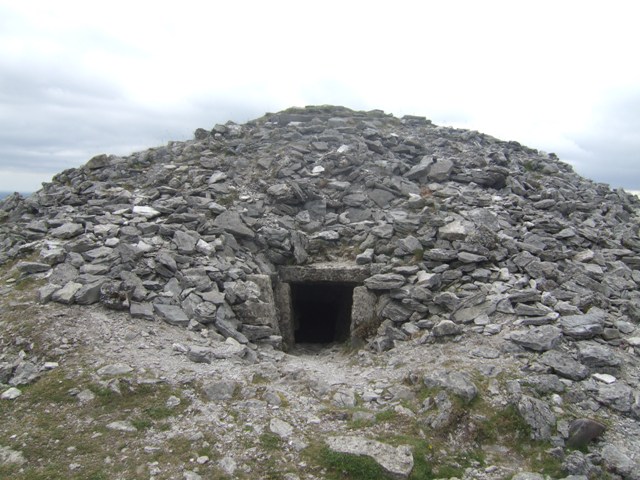|
Tóki Gormsson
Toke Gormsson (also known as Valtoke) was a Danish warlord or petty king, known from several runestones. Toke is mentioned on two runestones that note a battle at Uppsala, interpreted as the Battle of Fýrisvellir, as well as two more that mention people part of Tokis ''hird''. These stones also mention that he was the son of Gorm, which could be the Danish king Gorm the Old, and an Asbjørn who had a father named Toki. There is also a runestone at Aars, which once marked the cairn of "Valtóki". Attestations *The Hällestad Runestones: **DR 295 is raised by Áskell, a retainer of Toki in his memory, and describes how Áskell did not flee at Uppsala. **DR 296 is raised in memory of Erra, a retainer of Toki. **DR 297 is raised by "Ásbjôrn, Tóki's retainer", in memory of "Tóki, his brother". *The Sjörup Runestone was raised by Saxi, in memory of Ásbjôrn, son of Toki or Tofi (the rune is damaged), and also mentions the battle at Uppsala. * The Aars stone The Aars stone () or ... [...More Info...] [...Related Items...] OR: [Wikipedia] [Google] [Baidu] |
List Of Danish Monarchs
This is a list of Monarchy of Denmark, Danish monarchs, that is, the kings and queen regnants of Denmark. This includes: * The Kingdom of Denmark (up to 1397) ** Personal union of Denmark and Norway (1380–1397) * The Kalmar Union (1397–1536) ** Union of Denmark, Norway and Sweden (1397–1523) ** Union of Denmark and Norway (1523–1536/1537) * The United Kingdoms of Denmark–Norway (1536/1537–1814) * The Kingdom of Denmark (1814–present) ** Iceland (since the union between Denmark and Norway in 1380; independent kingdom in a personal union with Denmark 1918–1944; a sovereign republic since 1944) ** Greenland (since the union between Denmark and Norway in 1380; effective Danish–Norwegian control began in 1721; integrated into the Danish realm in 1953; internal home rule introduced 1979; Self-governance, self-rule assumed in 2009; Greenland has two out of 179 seats in the Danish parliament Folketinget) ** Faroe Islands (since the union between Denmark and Norway in 138 ... [...More Info...] [...Related Items...] OR: [Wikipedia] [Google] [Baidu] |
Sjörup Runestone
The Sjörup Runestone is a runestone in Scania, Sweden, from approximately 1000 AD that is classified as being in runestone style RAK. The Karlevi Runestone, the Egtved Runestone and the Hällestad Runestones may be connected to it. History The Sjörup Runestone has been known by scholars since the 1620s when Jon Skonvig depicted it for Ole Worm's work on Danish runestones.Enoksen 1998:114 Two centuries later, it was blown into six pieces to be reused as building material for a bridge. However, in the mid-1990s, the pieces were removed from the bridge and reassembled, and the repaired runestone was raised anew near the church of Sjörup. Form The inscription begins on the bottom right and goes counter-clockwise around the runestone until it reaches the bottom left, and then it changes direction and goes below the first row, and finally it changes direction again until it finishes in the centre of the stone. The band principally follows the convolutions of a snake. The runeston ... [...More Info...] [...Related Items...] OR: [Wikipedia] [Google] [Baidu] |
10th-century Vikings
1 (one, unit, unity) is a number, numeral, and glyph. It is the first and smallest positive integer of the infinite sequence of natural numbers. This fundamental property has led to its unique uses in other fields, ranging from science to sports, where it commonly denotes the first, leading, or top thing in a group. 1 is the unit of counting or measurement, a determiner for singular nouns, and a gender-neutral pronoun. Historically, the representation of 1 evolved from ancient Sumerian and Babylonian symbols to the modern Arabic numeral. In mathematics, 1 is the multiplicative identity, meaning that any number multiplied by 1 equals the same number. 1 is by convention not considered a prime number. In digital technology, 1 represents the "on" state in binary code, the foundation of computing. Philosophically, 1 symbolizes the ultimate reality or source of existence in various traditions. In mathematics The number 1 is the first natural number after 0. Each natural numbe ... [...More Info...] [...Related Items...] OR: [Wikipedia] [Google] [Baidu] |
House Of Knýtlinga
The Denmark, Danish House of Knýtlinga (English language, English: "House of Cnut's Descendants") was a ruling royal house in Middle Ages, Middle Age Scandinavia and Kingdom of England, England. Its most famous king was Cnut the Great, who gave his name to this dynasty. Other notable members were Cnut's father Sweyn Forkbeard, grandfather Harald Bluetooth, and sons Harthacnut, Harold Harefoot, and Svein Knutsson. It has also been called the House of Canute, the House of Denmark, the House of Gorm, or the Jelling dynasty. Under Harald Bluetooth's rule, he is said on a Jelling rune stone to have unified the territory that comprises modern-day Denmark under his rule, as well as Norway. The latter claim is more tenuous, as he most likely only had periodic and indirect power over parts of modern-day Norway. Under the House of Knýtlinga, early state formation in Denmark occurred. In 1018 AD the House of Knýtlinga brought the crowns of Denmark and England together under a personal un ... [...More Info...] [...Related Items...] OR: [Wikipedia] [Google] [Baidu] |
986 Deaths
Year 986 ( CMLXXXVI) was a common year starting on Friday of the Julian calendar. Events By place Byzantine Empire * August 17 – Battle of the Gates of Trajan: Emperor Basil II leads a Byzantine expeditionary force (30,000 men) against the Bulgarians to capture the fortress city of Sredets. After a siege of 20 days, Basil is forced to retreat from the Sofia Valley towards the town of Ihtiman (through a passage known as the Gate of Trajan). The Bulgarians under Tsar Samuel ambush and defeat the Byzantine forces. Only the elite Varangian Guard escapes with heavy casualties and leads Basil to safety through secondary routes. Europe * March 2 – King Lothair III (or Lothair IV) dies after a 32-year reign at Laon. He is succeeded by his 19-year-old son Louis V as ruler of the West Frankish Kingdom. * Summer: Al-Mansur, the '' de facto'' ruler of Al-Andalus, continues his effort in the north of the Iberian Peninsula and plunders the city of Coimbra (modern Por ... [...More Info...] [...Related Items...] OR: [Wikipedia] [Google] [Baidu] |
Norse Monarchs
Norse is a demonym for Norsemen, a Medieval North Germanic ethnolinguistic group ancestral to modern Scandinavians, defined as speakers of Old Norse from about the 9th to the 13th centuries. Norse may also refer to: Culture and religion * Norse mythology * Norse paganism * Norse art * Norse activity in the British Isles * Vikings Language * Proto-Norse language, the Germanic language predecessor of Old Norse * Old Norse, a North Germanic language spoken in Scandinavia and areas under Scandinavian influence from c. 800 AD to c. 1300 AD ** Old West Norse, the western dialect of Old Norse, spoken in Norway and areas under Norwegian influence *** Greenlandic Norse *** Norn language, an extinct North Germanic language that was spoken in Shetland and Orkney, off the north coast of mainland Scotland, and in Caithness ** Old East Norse, the eastern dialect of Old Norse, spoken in Denmark, Sweden and areas under their influence Location * Norse, Texas, a ghost town founded by N ... [...More Info...] [...Related Items...] OR: [Wikipedia] [Google] [Baidu] |
10th-century Danish People
1 (one, unit, unity) is a number, numeral, and glyph. It is the first and smallest positive integer of the infinite sequence of natural numbers. This fundamental property has led to its unique uses in other fields, ranging from science to sports, where it commonly denotes the first, leading, or top thing in a group. 1 is the unit of counting or measurement, a determiner for singular nouns, and a gender-neutral pronoun. Historically, the representation of 1 evolved from ancient Sumerian and Babylonian symbols to the modern Arabic numeral. In mathematics, 1 is the multiplicative identity, meaning that any number multiplied by 1 equals the same number. 1 is by convention not considered a prime number. In digital technology, 1 represents the "on" state in binary code, the foundation of computing. Philosophically, 1 symbolizes the ultimate reality or source of existence in various traditions. In mathematics The number 1 is the first natural number after 0. Each natural numbe ... [...More Info...] [...Related Items...] OR: [Wikipedia] [Google] [Baidu] |
Aars Stone
The Aars stone () or DR 131 is a late Viking Age runestone located on a mound in the churchyard at Aars in Himmerland, Denmark. Dated to the late 10th to early 11th century, it bears an inscription in the Younger Fuþark in memory of Toke Gormsson, known as Valtoke, who died at the Battle of Fýrisvellir. Description The stone is high and wide. It is inscribed on both sides, and decorated with semicircles inside the text band and a "U" shape above the text on the front. It is dated to between 970 and 1020.First described by J. Meier in 1654, it was lying face-down in the churchyard; in 1838 examined it and discovered the inscription on the front. In the 1920s it was re-erected on a mound west of the south transept. It is believed to have originally stood north-east of the church, probably as part of a memorial assemblage comparable to the Jelling stones. The inscription, in Younger Fuþark runes high, is read in boustrophedon, initially from left to right on the front and conti ... [...More Info...] [...Related Items...] OR: [Wikipedia] [Google] [Baidu] |
Hällestad Runestones
The Hällestad Runestones are three runestones located in the walls of Hällestad Church in Torna-Hällestad, about 20 kilometers east of Lund in Skåne, southern Sweden. Their Rundata identifiers are DR 295, 296, and 297. DR 295 is notable because it is held to be raised in memory of a warrior who fell in the legendary Battle of the Fýrisvellir, near Uppsala, Sweden between the Jomsvikings led by Styrbjörn the Strong and Styrbjörn's uncle Eric the Victorious, the king of Sweden, c. 985. Thunberg, Carl L. (2012). ''Slaget på Fyrisvallarna i ny tolkning'' 'The Battle of Fýrisvellir in a New Interpretation'' Göteborgs universitet. CLTS. . The other stones were raised by the same people, and they probably formed a monument together in memory of comrades lost in the battle. The Karlevi Runestone, the Egtved Runestone and the Sjörup Runestone may be connected to them. DR 295 This sandstone runestone, which is walled into the south-western corner of the church of Hällestad, ... [...More Info...] [...Related Items...] OR: [Wikipedia] [Google] [Baidu] |
Gorm The Old
Gorm the Old (; ; ), also called Gorm the Languid (), was List of Danish monarchs, ruler of Denmark, reigning from to his death or a few years later.Lund, N. (2020), p. 147''Pilemedia'' (in Swedish), 25 October 2020 Ancestry and reign Gorm is the reported son of semi-legendary Danish king Harthacnut I of Denmark, Harthacnut. Chronicler Adam of Bremen says that Harthacnut ...[...More Info...] [...Related Items...] OR: [Wikipedia] [Google] [Baidu] |
Cairn
A cairn is a human-made pile (or stack) of stones raised for a purpose, usually as a marker or as a burial mound. The word ''cairn'' comes from the (plural ). Cairns have been and are used for a broad variety of purposes. In prehistory, they were raised as markers, as memorials and as burial monuments (some of which Chambered cairn, contained chambers). In the modern era, cairns are often raised as landmarks, especially to mark the summits of mountains, and as Trail blazing, trail markers. They vary in size from small piles of stones to entire artificial hills, and in complexity from loose conical rock piles to elaborate megalithic structures. Cairns may be painted or otherwise decorated, whether for increased visibility or for religious reasons. History Europe The building of cairns for various purposes goes back into prehistory in Eurasia, ranging in size from small rock sculptures to substantial human-made hills of stone (some built on top of larger, natural hills). ... [...More Info...] [...Related Items...] OR: [Wikipedia] [Google] [Baidu] |



